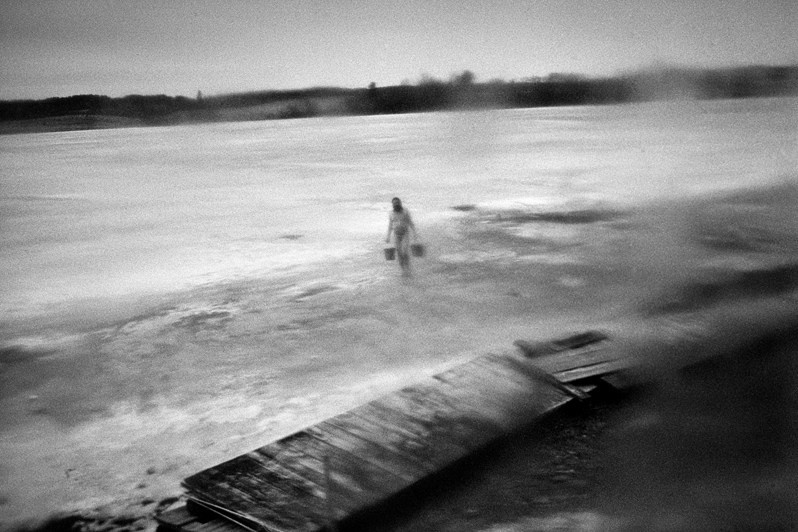Выравнивание текста
It will take a little more time before the Vyatka of last century’s 90’s will be judged by the photos of Aleksey which when gathered together in one album create an epic poem of Vyatka and of all the Vyatka and Kirov region. I am sure we will look closely into the faces, examine the clothing and household items in order to imagine or understand how people lived at the turn of the century.
For almost twenty years Aleksey has been photographing the everyday life of ordinary people; life in all its manifestations and simple topics. But in almost every one of his photographs there is something left unspoken, there is intrigue and nerve, and a special Vyatka intonation filled with irony. There is drama and details that speak, referring the viewer to the paintings of the great chroniclers, the masters of the Golden Age of dutch painting, Jan Vermeer and Pieter Bruegel the Elder.
We Viatka guys are sharp, we do not fall off the floor. We are brave people, seven for one, do not fear anyone. Witty fellows they drag the cow to the bath hut where the roof sprouts with grass as they just do not feel like mowing it. In Vyatka we do it our way. Vyatka country, the mother of all bounty, these and similar proverbs and sayings by the people of Vyatka are recalled when looking at Aleksey Myakishev’s pictures.
Kirov region, Karinka, 1994. A wedding cortege alongside a fence encounters a group of people. The groom smiles, the bride is tense with a small bag with money in her hands. But why is a man with a wily face and a rolled mattress on his shoulder reinforcing a sense of confrontation? Why does a young man in the right of the group have his hand over his mouth, as if surprised? A girl in the left of the group, lost in thought, gnaws at something. Who is this sad faced woman creating tension? That man with his back turned to us and facing the congregation, what point is he trying to make? How come the bridesmaid has such a face, as if beyond the fence there is nothing but universal grief? What is the bridegroom’s friend trying to explain? Strained faces and not a simple situation; just like a movie. A church in the background, homes, a rickety fence, the haystack and white antediluvian bus, everything is a set for a film about provincial life.
Kirov region, Belaya, 1995. A woman that looks like a rural school teacher in glasses and a hairdo from the 50s stands with her head lowered hugging a little girl who is wearing a silly white bow on her head. Behind them there is an old car that looks like a Moskvich Kombi. One of the boys is trying to scramble up onto it whilst the other boy, who is clearly older, is turned towards the fence. Boots are hanging on the fence, like during the off-season which here is impassable with mud. Something has happened. We do not know what it is, but why is it so sad?
Kirov region, Oparino, 1997. A scene on a village street. Two women are talking lively. The woman on the left has put her bag on the ground. She is wearing a lightweight cotton dress and slippers. The one on the right is wearing rubber boots and a worn out man’s jacket, apparently she has come from the fields, clinging to the handle of a cart loaded with an intricately shaped bale. It could be hay. In the background there is an abandoned building with the skeletal remains of a sign’s letters and broken windows; a former produce shop, a two stories barrack like building with a dark doorway, cross shaped antenna and a square eye opening of a loft. Passing by them is a woman with a canister and another woman, all in shadow, goes towards the door of the building creating a composite with the talkers, a triangle that deepens space. Here every piece is in its place, even a couple of drawn or perhaps live pigeons are on a gray wall.
These are unpretentious, simple subjects, their truth and authenticity is strictly underlined by captions. The captions consist only of the place and year the photograph was taken. The author does not impose anything on the viewer. It just shows life as it is.
Natalia Udartseva
Introductory text from the book Vyatka, 2014




































































































